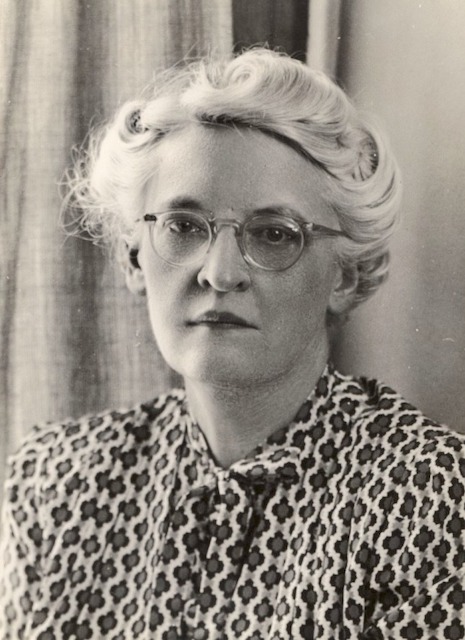
Renowned writer Ruth Suckow was born in Hawarden in 1892 and lived in 12 Iowa communities. Photo courtesy of Ruth Suckow Memorial Association
Nov/Dec 2023 (Volume 15, Issue 6)
By Barbara Lounsberry
A moving love story.
A meteoric early literary rise.
Yet she has slipped into the dark hole of time.
Ruth Suckow, Iowa’s most neglected major writer, is our Willa Cather. In nine novels and 43 short stories Suckow captured Iowa’s small towns and farms, offered tales of Iowa love and loss, of farm couples retiring and moving to town, of women and men striving to be independent, of going away and coming home.
Has any other Iowa fiction writer explored Iowa life more thoroughly?
Perhaps the neglect comes because no one knows how to pronounce her German-American name: Soo-co.
But the neglect is about to change, for on Jan. 1, 2024, a traveling exhibit on Suckow’s life and works—designed by Iowa artist Roy Behrens—will launch a year-long centennial celebration of Suckow’s first novel, “Country People,” set in Iowa.
Lived in a dozen towns
The exhibit will start appropriately at the Hawarden Public Library in the northwest corner of the state, for Suckow was born in Hawarden in 1892. (Her birth home was moved to Hawarden’s historic Calliope Village and can be visited.) The traveling exhibit suits Suckow perfectly, for as a congregational minister’s daughter, she was much-traveled herself, living in 12 Iowa communities across her days: Hawarden, Paulina, LeMars, Algona, Fort Dodge, Manchester, Grinnell, Davenport, Earlville, Cedar Falls, McGregor and Des Moines.
In Hawarden, her urbane minister father would bicycle to his pastoral calls with a little wooden seat attached to the handlebars so Ruth could go with him. Here began early on her view of the Iowa countryside and Iowa life. At home, if she was quiet, he would let her play in his book-lined study while he composed his sermons. It was her favorite place, for she would sit in the window-seat and make up stories about her paper dolls or whisper conspiratorially to her beloved cat. She would fold her stories into little books that she would decorate with her drawings.
When she looked back at her childhood in her 1952 book “A Memoir,” Suckow called herself “a youthful American patriot, and a very fiery one.”
At age 21, her boldness led her to leave Grinnell College after three years and enroll in Boston’s Curry School of Expression. She graduated in 1915, but found the school disappointing for she soon saw that elocution would not support a poor young woman who needed to make her own way.
She turned to the University of Denver to finish her bachelor’s degree and add a master’s degree. Already she stood out, for a fellow student, Aimée Buchanan, described the “quiet authority” of this soft-voiced young woman:
“She naturally became the leader of us all. … She had read more than any of us; she knew what she was talking about when she expressed views on novels or short stories or poetry, while our views were tentative and faltering …
“Ruth loved walking [and] it was a revelation to me to take a walk with Ruth. Her conversation was not commonplace, even when she commented on everyday things. She liked to recite poetry; she taught me to love it. … I think she knew nearly all of the Oxford Book by heart.”
In 1918, Suckow persuaded Aimée to take a summer waitress job with her in Estes Park. More boldly, at summer’s end she talked Aimée into walking the whole 90 miles back to Denver. Seven years later, Suckow would title her second novel “Odyssey of a Nice Girl,” an intriguing title for this is how Aimée described their trek:
“[N]ice young ladies did not go off alone on walking trips on lonely mountain roads; neither did they appear in public, as we were going to do in Boulder and Denver, in pants; neither, did they turn in any old place to sleep. And they certainly did not sleep out alone without any cover but sweaters, as we did that first night, at a nine-thousand-foot altitude. … I never think of that week’s walk without a feeling of utter content and joy that once I lived those youthful, halcyon days.”
TO READ THE ENTIRE STORY AND OTHER FASCINATING STORIES ABOUT IOWA HISTORY, subscribe to Iowa History Journal.
